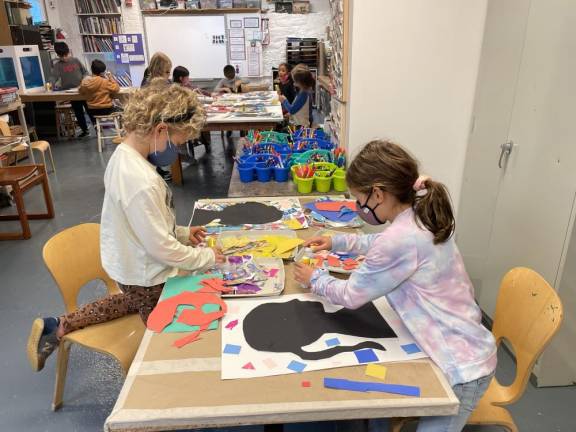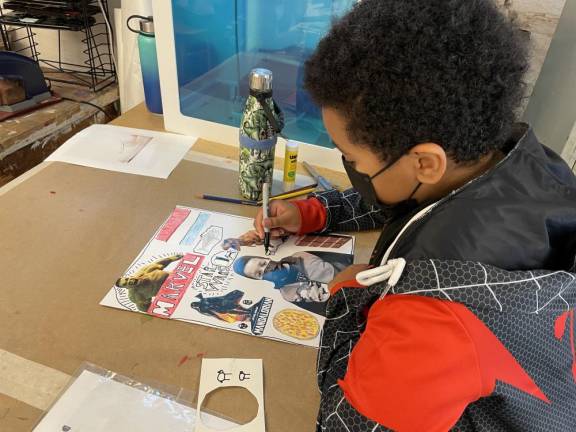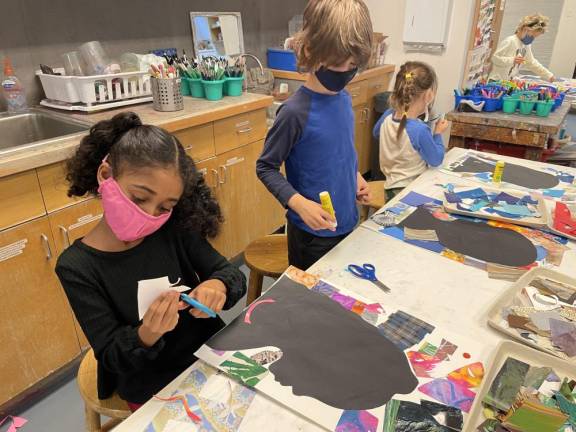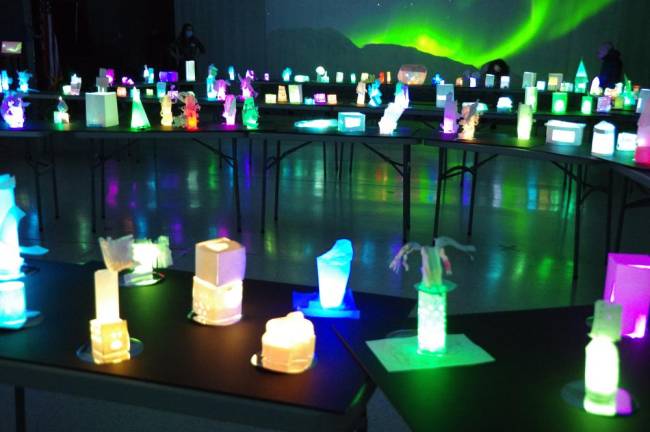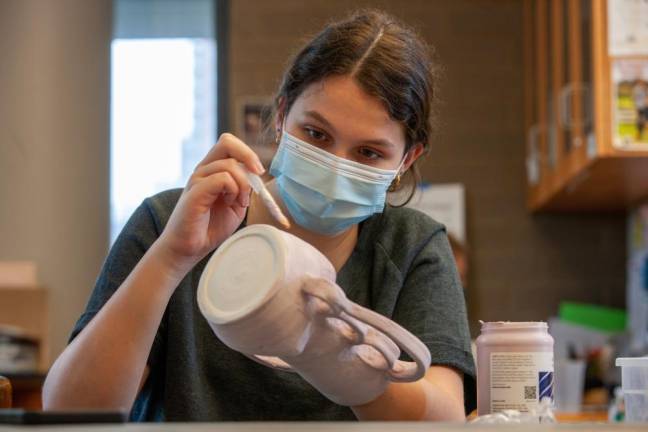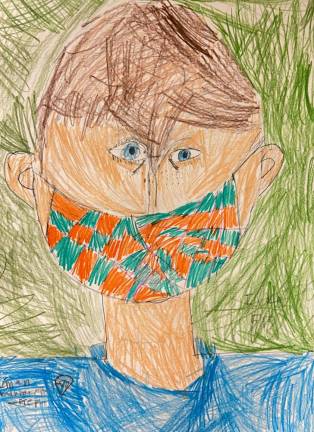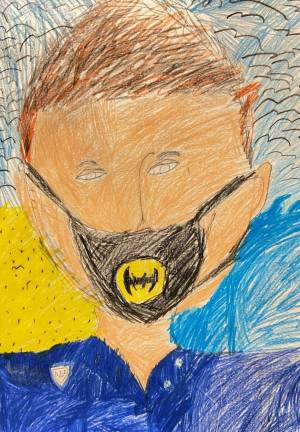The children are doing great, at a glance. They are joyful and learning, eager to start school each day. Educators are determined to keep it so. Determined and tired.
Successfully educating children is hard work. Doing it during a two-year pandemic takes everything each school community has to give. For New York City independent schools, the COVID protocols are pretty much mastered by now: the masking, even doubling up in some instances or upgrading to the CDC recommended respirator-types; the almost universal vaccine compliance for eligible ages throughout the schools; continued remote learning from home if a child gets sick; still frequent testing. They’re covering all the bases.
Keeping students, faculty and staff safe is still a massive daily undertaking, if now more familiar than during the early days of 2020 when administrators scrambled to figure out how to teach while dodging a determined virus. But being familiar doesn’t make it any easier.
David Egolf, Head of School at the Corlears School for children from pre-school through fifth grade in Chelsea, speaks about the demands of leading a school in these unpredictable times.
“While I am exhausted from two years of relentless crisis management and constant uncertainty, I also continue to see this as a moment to do something impactful and meaningful for our community,” Egolf said. “Successfully bringing our enrolled children into the building with little disruption, despite the tremendous disruption happening around us, was extraordinary.”
Omicron was sudden and disruptive, but none of the schools closed. They adapted again. Learning continued. It does take its toll, however.
“Like all school communities, we are tired,” Egolf shared. “No one thought that this year would be so hard. By late spring of last year, we all began to imagine a year of gradually improving conditions and reduced stress. It has felt like a punch to the gut each time another twist or negative turn has come our way.” He added that it is the community’s shared goal of focusing on the children’s needs that keeps them going.
Adapting to Changing Protocols
At the Trevor Day School uptown – with campuses on both the Upper West and Upper East Side – Head of School Scott Reisinger said the school was doing very well, back to full enrollment, with children engaged and learning. Similar to last year, Reisinger emphasized the importance of keeping the school community of students, faculty, staff and parents safe, and together.
Constantly monitoring and adapting to changing health protocols for Trevor’s nursery through 12th grade students, while simultaneously working to bring back in-person school traditions and milestones, is a process of many moving parts for Reisinger and his administrative team.
“I think this has been one of the biggest challenges of my career,” the long-time educator said. “It clarifies your priorities.”
Maria Castelluccio, Head of School at Léman Manhattan Preparatory School located in Downtown Manhattan, has stayed steadfast in her determination to keep the school open from the beginning of the pandemic.
“Throughout the pandemic, we’ve provided predictable routines and a sense of community to offer some certainty in a time of uncertainty,” Castelluccio said. “COVID has presented the need to plan for changing guidance and scenarios. My goal as the school leader has been to model and encourage flexibility and resilience across our community.” And it has worked so far, she said. “Léman has proven that we are ready for whatever comes our way.”
Selda Dagistanli and Jarrod Pendlebury, parents of a 2nd and 4th Grader at Léman, say their son and daughter are doing well overall, both at home and at school.
Pendlebury said the children have been incredibly resilient, quickly adapting to hybrid learning on the occasions that it became necessary and are equally comfortable with wearing (and keeping on) a mask at school all day.
“They just do it,” Dagistanli said about the children wearing the masks consistently. “They do it because it’s the new normal at the moment.” She added that she prefers if they went to school in-person as the school has a lot of COVID precautions in place.
Back in Chelsea, Kim Smith, the new Headmaster at all-boys Xavier High School, finds New York exhilarating and says her work “is a beautiful challenge” and that she feels lucky to be part of the school and neighborhood.
Regarding the pandemic, she shares the sentiment of pandemic fatigue.
“I think, in many ways, we are experiencing the pandemic the same ways as everyone else – we are really tired of it, and tired of how much it requires of us,” she said. “But at the same time, it has been something that brings us together, it has made us have to work harder for the things we value.”
Teachers and Classrooms
At Corlears, kindergarten teacher Olympia Hamlor says her days vary emotionally.
“There are moments when I feel like I have finally found my footing while teaching in person throughout the pandemic,” Hamlor said. “I share laughter and smiles with my students, [but] there are also moments when I feel like things are constantly changing. In those moments I feel a high-level anxiety around keeping myself and my students safe. I am constantly asking myself “Am I doing enough?”
Hamlor believes the children are doing great overall. They love coming to school each day and are constantly racing to be the first one in the door in the morning, she said. They are eager to reconnect with their peers and talk, are doing an amazing job with wearing their masks.
Colleen Goddard, the early childhood specialist, who has a Ph.D. in Early Childhood Development, is studying, among other things, how long-term mask wearing by children under 5 years may impact “social relatedness” – how they read and reflect back social/facial cues. This she says translates into empathy, compassion, understanding and identification of thoughts/feelings and emotions in the larger, social world of shared experience.
She agrees that the children are doing well – they are playing and having a great time, learning to read and retaining information. Yet, because of her training and background, she realizes and acknowledge that she has a different lens.
“They are doing fine. They don’t know what the other world was like, so they’re doing the best they can” Goddard said.
Art Projects
For little children, and bigger ones too, art helps.
At Trevor Day School, Morgan Porzio, administrator and parent of a fifth grader at the school, describes the excitement her son and other children share from the return of in person school celebrations, field trips and art projects.
One of the programs “is an entire musical production that students put on over six weeks,” she said. “It’s a longstanding Trevor tradition – from start to finish – the costumes, the sets, learning the musical! Children are over the moon about it!” In the lower school through fifth grade, students recently put on a “Glow Show: a trail of more than 200 dazzling light sculptures” combining art and technology where the 4th and 5th grade students even designed and wired the LED structures themselves.
Christine Walker, Studio Art teacher at Corlears, says her days also fluctuate all the time. The unpredictability of their days since the start of the pandemic has added additional concerns to her life –“will people be wearing their masks on the train? Will there be positive cases after our school-wide COVID tests? Will I have all my students in class? Will I get sick? What about my family? How will my stress affect my work and how will my student’s stress affect their performance at school?”
On other days she says, she can put it all aside and just focus on sharing her love of art with the students and providing them with opportunities to explore materials and techniques. “To give them the tools they need to express themselves in a calm and safe environment.”
Goddard, the early childhood specialist, says the school leaders and the whole school community are ultra-focused on the children’s well-being as they navigate these unusual times.
“They are doing great, but I don’t think we can ignore the possibility, or need, for giving children extra care,” she said.
“COVID has presented the need to plan for changing guidance and scenarios. My goal as the school leader has been to model and encourage flexibility and resilience across our community.” Maria Castelluccio, Head of School at Léman Manhattan Preparatory School
